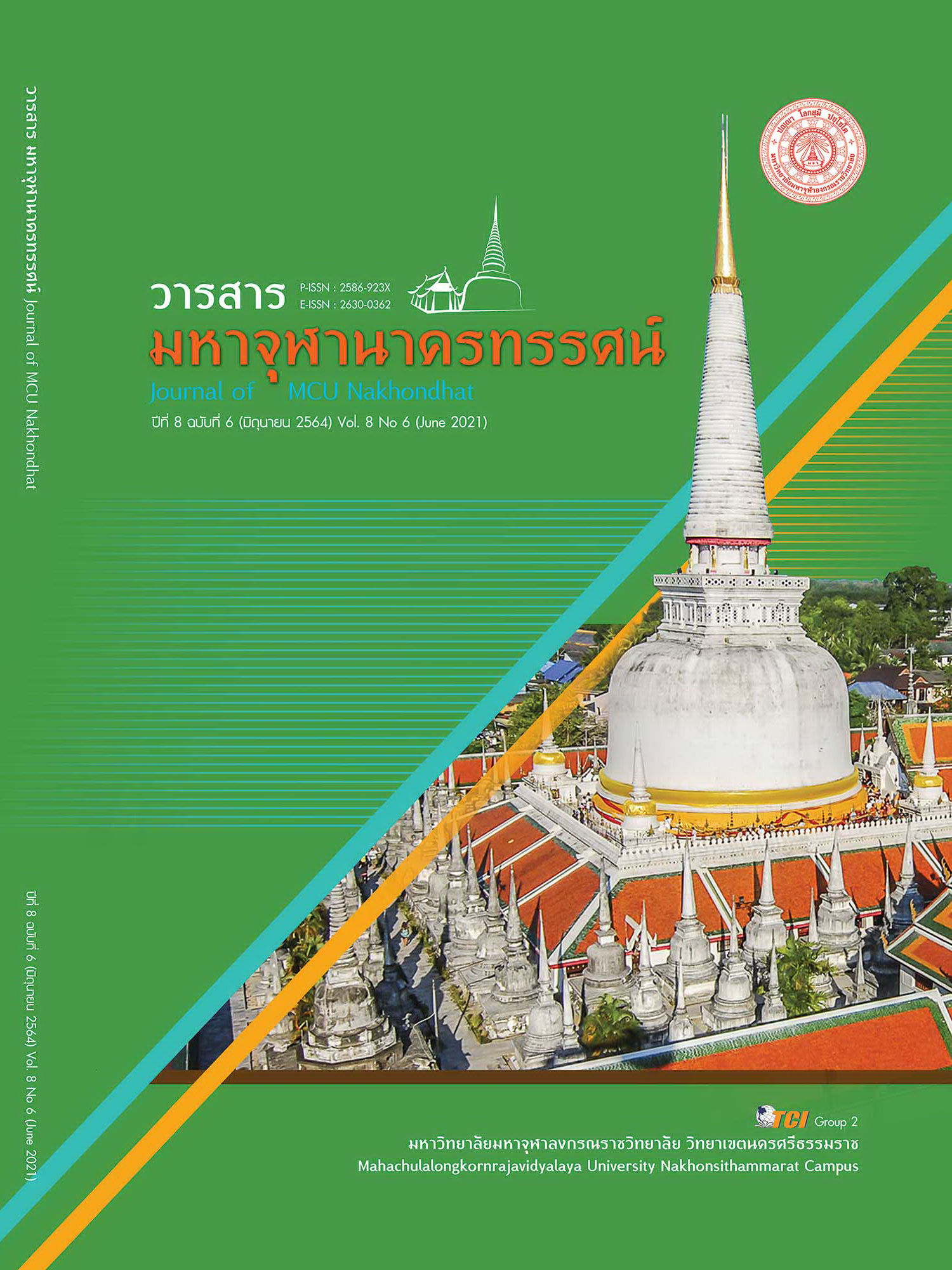A STUDY OF THE CAUSE OF DISEASE BY THE WEATHER OF THAI TRADITIONAL MEDICINE IN ACCORDANCE WITH BUDDHIST PHILOSOPHY
Main Article Content
Abstract
The objectives of this research article were to 1) study the role of the wind element in the body according to the principles of Buddhism philosophy and medical science and 2) study illness due to the changes in external climatic factors on the function of the wind element in the body. This study is documentary research by data collection from the Buddhist scriptures, Anatomy and Physiology textbook and academic papers on meteorology.The data were analyzed the functional relationship between the role of the wind element in the body and the external climate factoruntil indicating the factors of weather affecting the disease of the body. The results revealed that the wind element is the air that flows into the body through the respiratory system. It plays a role in the flow of three major channels: blood vessels, ligaments, and air vents within the body, known as " the flow of wind and blood ". Factors affecting climate change, especially temperature, humidity, air pressure, and height of the area, affect the variability and congestion of the wind in different channels of the body causing illness such as heat stroke due to increased air temperature, joint pain due to low temperature and humidity, feeling dizzy and palpitations in elderly due to high temperatures and humidity, etc. This is to enable Thai traditional medicine to cope properly with illnesses caused by the weather. Including treatment with Thai Herbal Therapeutics, Nutritional and Thai Manus Therapeutics. In the future this research should be further expanded into the development of treatment and follow - up research in the volunteer patients.
Article Details
References
กรรณิกา นันตา. (2563). การติดตามผลการบริหารเลือดลมด้วยหัตถเวชในผู้สูงอายุ. ใน วิทยานิพนธ์การแพทย์แผนไทยมหาบัณฑิต สาขาวิชาการแพทย์แผนไทย. มหาวิทยาลัยราชภัฏเชียงราย.
กองการประกอบโรคศิลปะ กรมสนับสนุนบริการสุขภาพ. (2549). ตำราแพทย์แผนโบราณทั่วไป สาขาเวชกรรมไทย เล่ม 1. นนทบุรี: บริษัท ไทภูมิ พับลิชชิ่ง จำกัด.
โครงการตำราวิทยาศาสตร์และคณิตศาสตร์มูลนิธิ สอวน. (2562). อุตุนิยมวิทยา. กรุงเทพมหานคร: ด่านสุทธาการพิมพ์ จำกัด.
บุษบา ประภาสพงศ์ และคณะ. (2552). แพทย์ศาสตร์สงเคราะห์ ภูมิปัญญาทางการแพทย์และมรดกทางวรรณกรรมของชาติ. กรุงเทพมหานคร: คุรุสภาลาดพร้าว.
พระมหาพิชิตชัยบุญเคน. (2548). ธาตุในพุทธศาสนาเถรวาท. ใน วิทยานิพนธ์ศิลปศาสตรมหาบัณฑิต สาขาวิชาพุทธศาสนศึกษา. มหาวิทยาลัยธรรมศาสตร์.
พระราชวรมุนี และคณะ. (2541). วิมุตติมรรค. (พิมพ์ครั้งที่ 5). กรุงเทพมหานคร: สำนักพิมพ์ศยาม บริษัทเคล็ดไทย จำกัด.
มนัส สุวรรณ. (2531). การปรับตัวของมนุษย์ต่อความร้อน - เย็นของอากาศ. วารสารภูมิศาสตร์, 13 (1), 13-19.
มหาจุฬาลงกรณราชวิทยาลัย. (2539). พระไตรปิฎกภาษาไทย ฉบับมหาจุฬาลงกรณราชวิทยาลัย. กรุงเทพมหานคร: โรงพิมพ์มหาจุฬาลงกรณราชวิทยาลัย.
ศิริพักตร์ จันทร์สังสา. (2563). การศึกษาความเชื่อเกี่ยวกับอาการเลือดลมแปรปรวนของผู้สูงอายุ. ใน วิทยานิพนธ์การแพทย์แผนไทยมหาบัณฑิต สาขาวิชาการแพทย์แผนไทย. มหาวิทยาลัยราชภัฏเชียงราย.
สมเด็จพระพุฒาจารย์ (อาจ อาสภมหาเถร). (2554). คัมภีร์วิสุทธิมรรค. (พิมพ์ครั้งที่ 10). กรุงเทพมหานคร: บริษัทธนาเพลสจำกัด.


